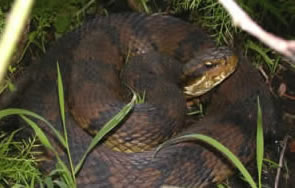
Agkistrodon piscivorous
VENOMOUS
Photo by RW Van Devender
Description: Cottonmouths are very heavy-bodied, semi-aquatic pitvipers with dark crossbands on an olive to dark brown background. Young cottonmouths are often reddish brown and thus resemble their close relative, the copperhead. Adult cottonmouths are considerably darker than juveniles and can sometimes be entirely black. Like copperheads, young cottonmouths have yellow tails which they wiggle to lure unsuspecting frogs and lizards.
Feeding/Diet: This species is most active at night and feeds on a variety of prey including rodents, frogs, fish, and other snakes, many of which are ambushed near the edge of the water.
Habitat/Range: Though they can be found far from water, cottonmouths are usually associated with aquatic environments, preferring swamps, canals, and slow-moving streams and rivers.
Reproduction: They mate during spring and fall and give birth to 2–15 young during late summer.
Miscellaneous: The cottonmouth gets its name from the white coloration inside the mouth that they open wide as a threat towards potential enemies. Cottonmouths are often referred to as “water moccasins,” as are nonvenomous watersnakes, a species with which they are often confused.Though often perceived as aggressive, cottonmouths usually try to escape or dissuade their enemy before biting. Besides gaping the mouth, the cottonmouth will also vibrate the tail, flatten the body to make themselves look bigger, and release foul smelling musk from scent glands near the tail. A cottonmouth's venom is very toxic and bites can be severe.
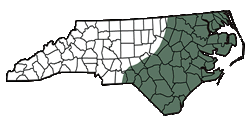
The shaded region represents the range of the cottonmouth in North Carolina.

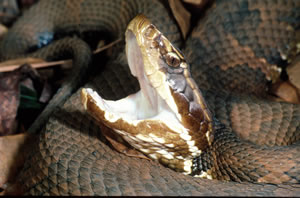

Mouth gaping is a common defense against predators.
Photo
by RW Van Devender
Photo by ME Dorcas
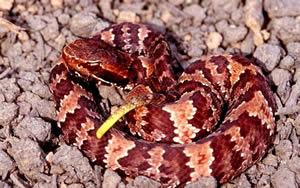

Photo by John White
This website created by: J. Willson, Y. Kornilev, W. Anderson, G. Connette and E. Eskew.
For comments or questions contact M. Dorcas: midorcas@davidson.edu.
M. Dorcas homepage: http://bio.davidson.edu/dorcas
Davidson College, Davidson, North Carolina 28035-1719.
Text and maps from: Dorcas, M. E. 2004. A Guide to the Snakes of North Carolina. Davidson College - Herpetology Laboratory, Davidson, NC. – Copyright by Michael E. Dorcas.
Partial Funding for this website provided by a Associate Colleges of the South, National Science Foundation, and Duke Energy.